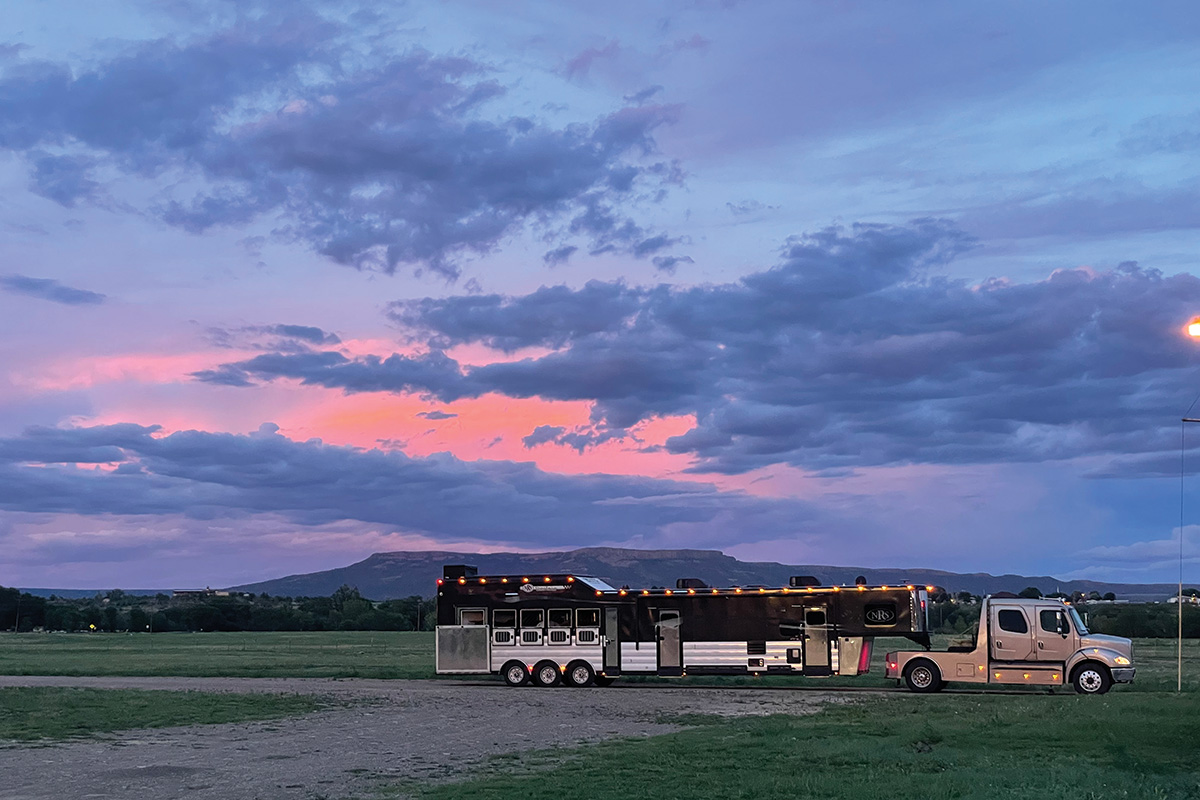
Travel for horses has come a long way since pre-1950, when railroad shipping was the main option for covering long distances. Today’s horses frequently travel many miles for competition, breeding and relocation. When it comes to long-distance hauling, should you haul your own horse or use a commercial shipper? Learning what’s involved can help you make the smartest and safest decision.
Veterinary Input Before Hauling
While you can never eliminate risk completely, good planning can greatly minimize it, according to Woodrow Friend, DVM, who has been a veterinarian with Rood and Riddle Equine Hospital in Lexington, Ky., for 21 years.
Paperwork: “Every state requires a certificate of veterinary inspection (CVI), but some also require a permit number to enter; you just need to know beforehand,” says Friend. Some equine events and boarding barns also require proof of certain vaccinations.
Confirm ahead of time what paperwork is required at your destination and any states you’ll be traveling through. Health certificates should be obtained within 30 days of travel.
Proof of negative Coggins is always required. Confirm with your destination, as some states require a six-month Coggins, instead of the standard one-year test.
Prevent illness: Take temperatures before shipping and never ship a horse with even a low-grade fever.
Friend recommends preloading with electrolytes—either paste or top-dressed on their feed—to encourage your horse to consume more water before traveling.
“I’ve seen more pneumonia than colic from shipping in my practice,” he says. “You’re dealing with a long-necked animal that needs to drop his head to drain the airways.”
As he explains, when horses are tied with their heads up for hours, the mucous and natural secretions in the airways can’t clear out quickly, which increases the chance of respiratory problems. This risk is heightened when horses are eating hay from a suspended net with wind blowing dust and bedding particles around.
Friend says the best scenario for long-distance travel is a box stall setup so hay can be at floor level and the horse can drop his head to clear his airway. If this isn’t possible, and the horse is tied, but frets without hay, he suggests dampening the hay slightly to reduce dust and fine particles.
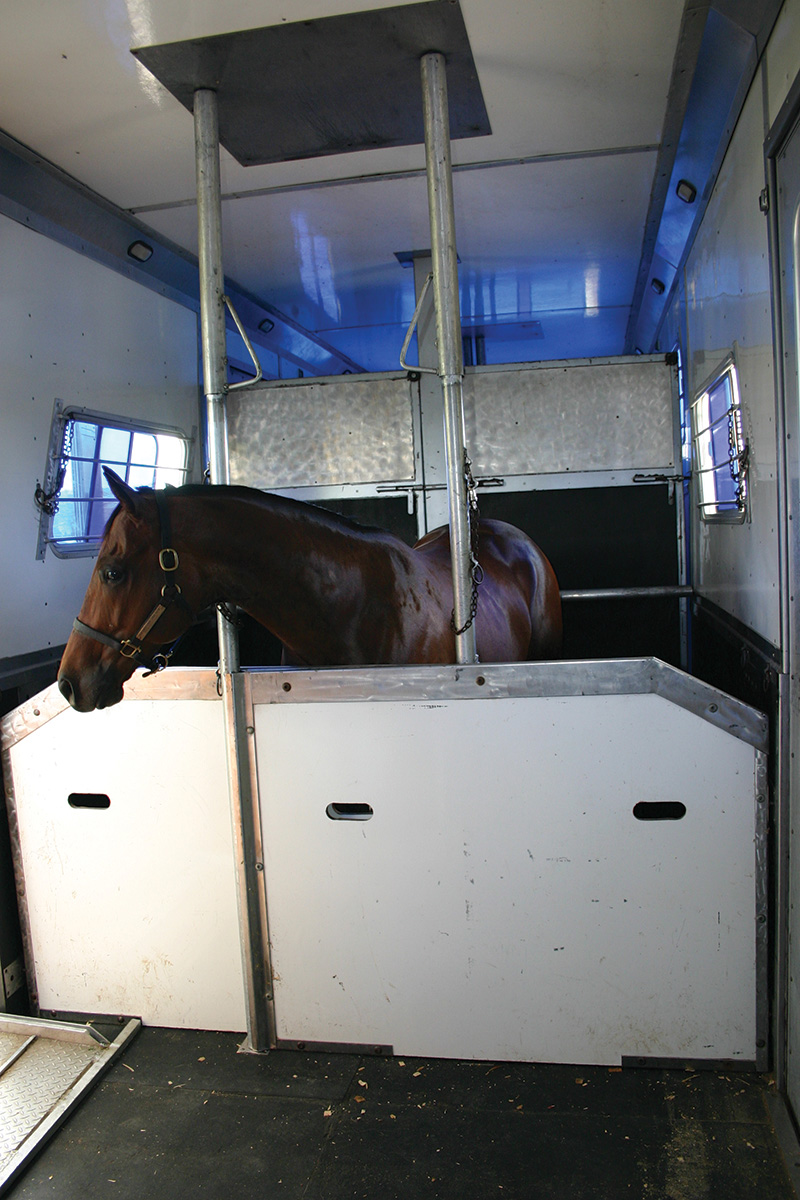
Overheating: Finally, don’t underestimate how much body heat horses generate in a closed trailer. Check that all vents and windows are open (with grills and/or screens in place) to maximize air flow.
“During the summer, driving through the night is easier on horses because it’s cooler,” says Friend.
Consider a Commercial Hauler
A major advantage of using a reputable commercial shipper is that they must be Department of Transportation (DOT) compliant, so they are precise about safety regulations and generally have two drivers per rig.
When you factor in stops for fuel and checking horses, an average of 50 mph is typical for a commercial hauler, notes Jim Welsh, owner of Elite Horse Transport based out of Waco, Ky.
Welsh uses air ride tractor trailers and hauls predominately show horses (hunter/jumpers and dressage) and some racehorses, both Thoroughbreds and Standardbreds.

They operate primarily from New York, Virginia and Kentucky to all points in the U.S. and Canada. Twice a month, he hauls horses to and from California.
“We load up in Lexington (Ky.) and will be in Southern California within 60 hours,” says Welsh. “Horses are in box stalls and stay on the truck the whole time.”
The rig is equipped with cameras so drivers can continually view the horses. Hay and water is in front of horses the entire trip. Stalls are bedded with shavings.
“On a trip this long, we stop and shut down for four to five hours once, and will have a two-hour stop twice during the trip. If a horse shows us he needs more rest, we’ll stop more often,” he adds, explaining that stopping encourages horses to rest, drink and urinate.
In a commercial van, a box stall measures about 8’x8′. Because the horse is not tied, he can position himself however he’s most comfortable—whether facing forward, backward, or diagonally.
The “stall and a half” size (also called a double stall) is usually 4’x8′, and the horse is cross-tied.
“Numerous university studies have proven a box stall is the best way for a horse to travel,” says Welsh, who only ships cross-country if horses are in box stalls.
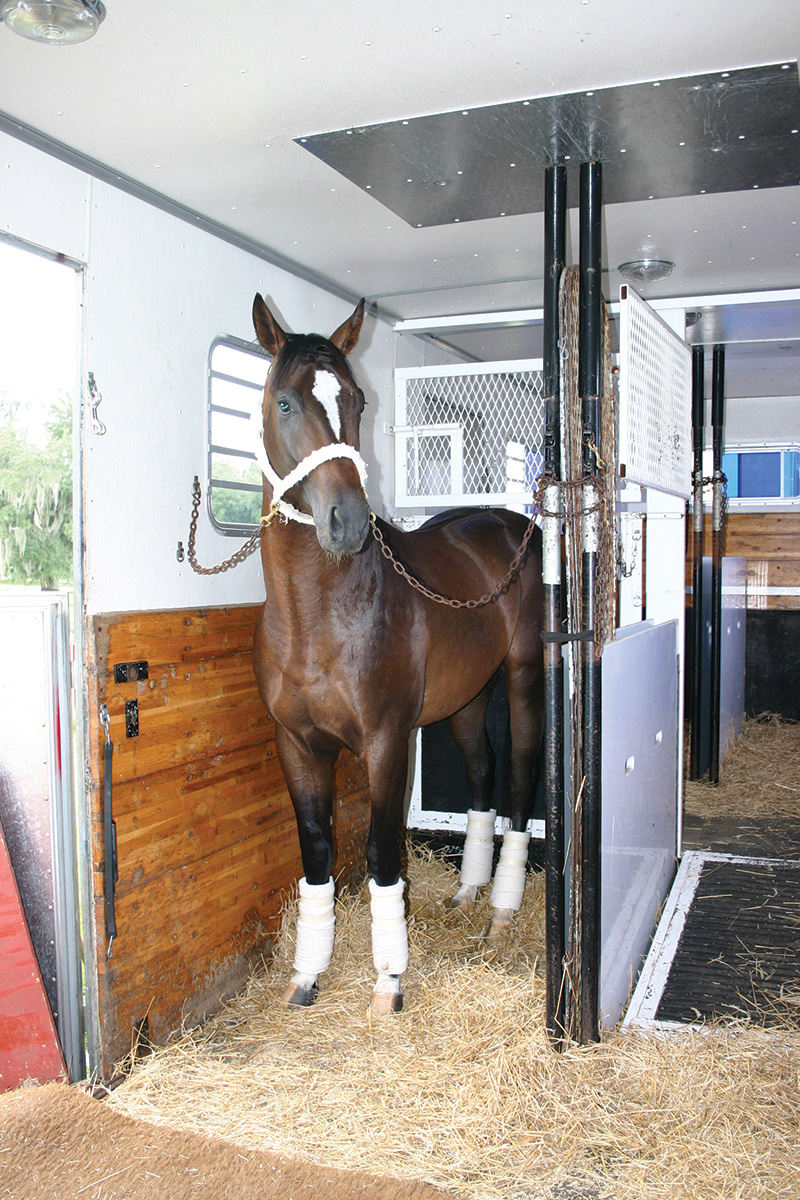
Welsh also gets called out regularly on rescue missions to assist owners who have a breakdown while hauling their own horses.
“Bring extra water and hay with you,” he advises. “Check your route and plan ahead for what you’ll do if something goes wrong. Realize that if you only have one driver, a 700-mile trip is going to be a challenge. You have to be realistic with your expectations, especially if you’re driving through the night. If you’re not used to driving like a truck driver, it’s a daunting task to drive 1,000 miles and be concerned about horses behind you.”
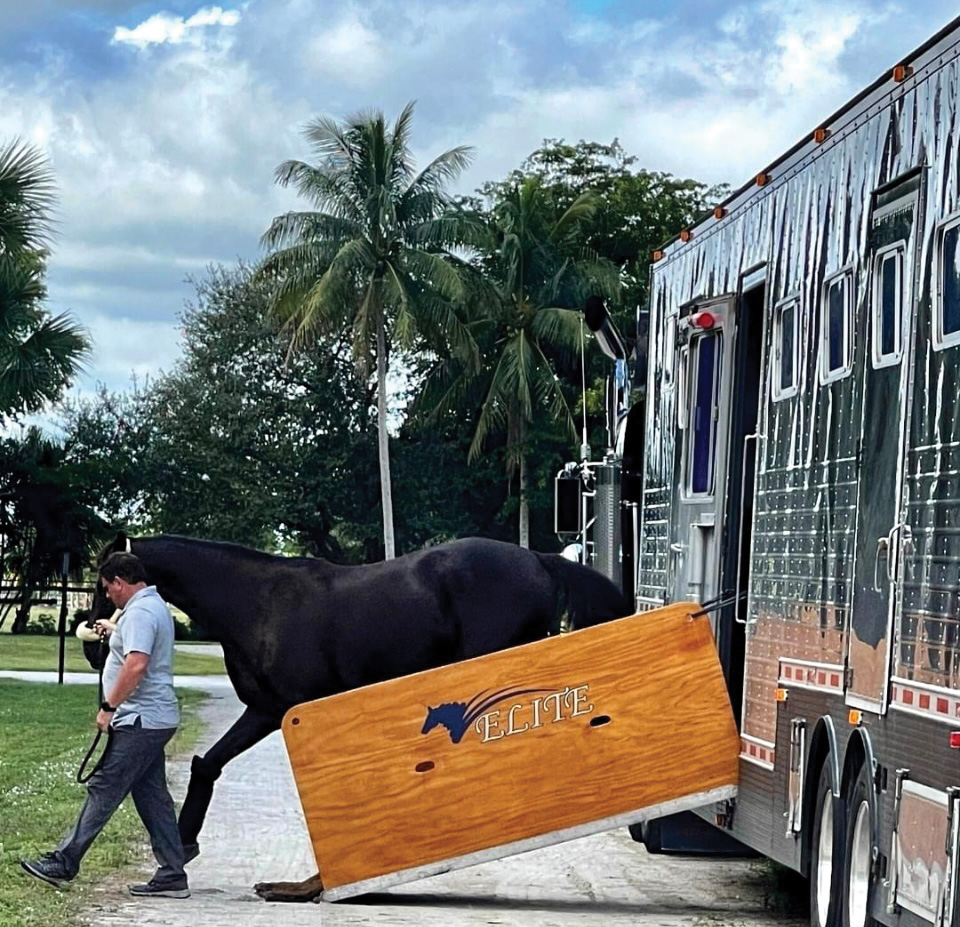
Hauling Your Own
Angela and Jackie Ganter barrel race professionally, which puts them on the road all summer traveling to rodeos across the western U.S. and up into Canada. The mother-daughter team live in Abilene, Texas, where they own and operate a boarding facility.
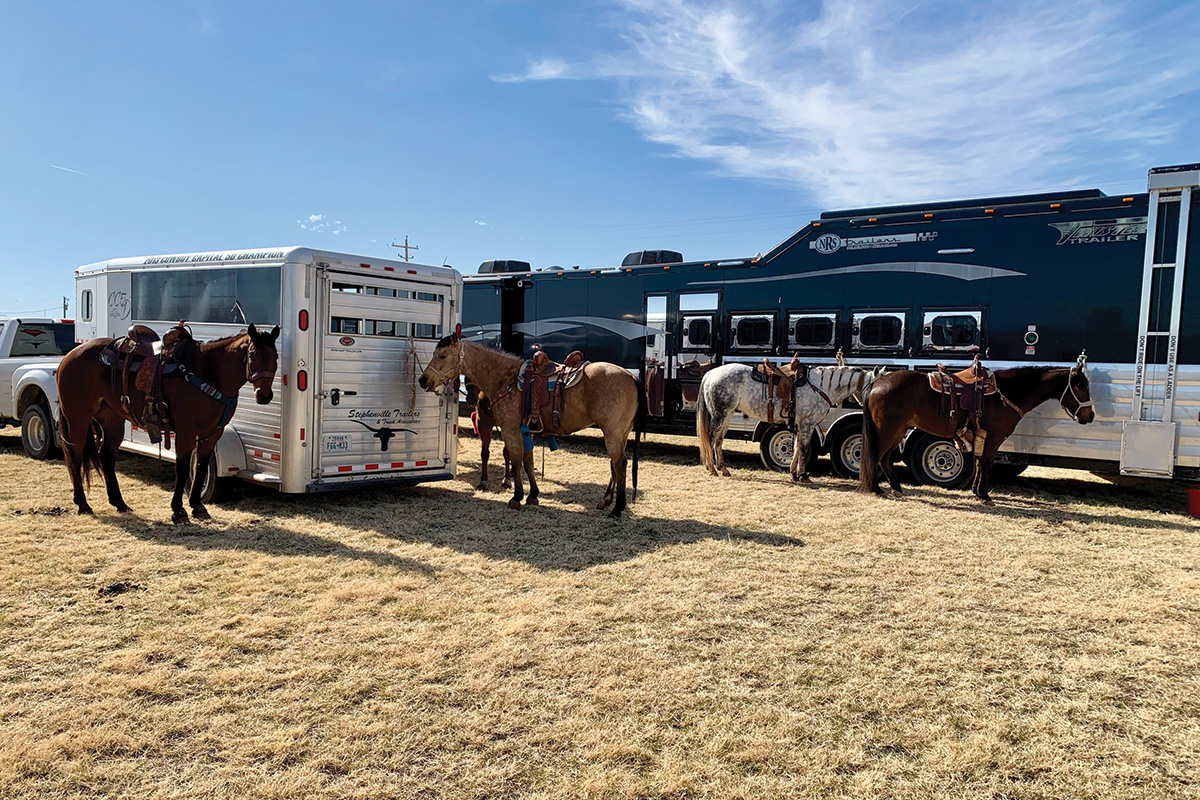
The Ganters haul their own horses to competitions, typically loading five horses in their air ride five-horse living quarters trailer pulled by a small Freightliner.
The distance between rodeos can vary anywhere from three to 15 hours.
“If we aren’t in a time crunch, we like to split trips into two days and lay over somewhere,” says Jackie. “If we have a time crunch, we will drive straight through and take turns driving. We usually don’t unload unless it’s a 10-plus hour trip. Then we’ll stop halfway and let them out for 30 minutes or so to get their heads down, walk and get a drink. If we have time to spend the night, we’d rather do that. We use horsemotel.com and make plans in advance.”
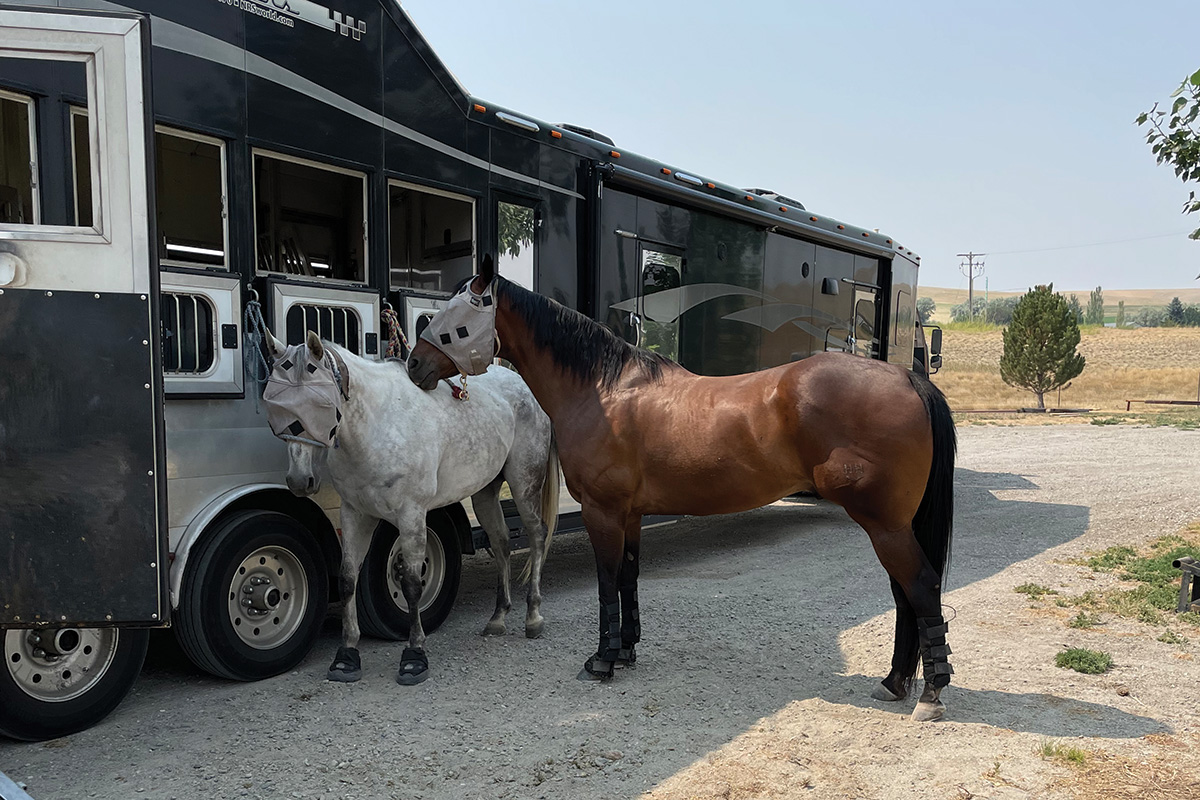
The Ganters use slow-feeder hay nets so horses can pick at hay while en route.
They always bring extra water, feed, and hay, as well as different weight blankets to be prepared for weather changes.
“One time we were stranded for 24 hours on the side of road during a blizzard because the interstate was shut down due to treacherous conditions,” says Jackie.
Plan Your Stops
Friend points out that the ride can be very different for horses traveling in an air ride tractor-trailer versus a standard horse trailer. In addition, traveling in stop-and-go traffic puts more physical strain on a horse than uninterrupted travel at highway speed on the interstate.
Although it might seem like your horse is just standing in the trailer, he’s constantly adjusting his balance to accommodate for changes in speed, braking, turns and lane changes, not to mention uneven road surfaces and trailer vibration.
This is why horsemen who regularly haul long distances stop every four or five hours for 20 to 30 minutes. This allows horses to relax, drink and urinate, something they often won’t do while the trailer is in motion.
“Even just stopping for a short time will give their legs a break from the beating of driving down the road,” says Ganter.
Friend stresses the importance of having your horse drink during his journey.
“Some horses won’t touch water when traveling, but you have to know your horse,” he says. “If you have a horse with history of colic or tying up, you’ll have to stop and offer water and walk him more frequently.”
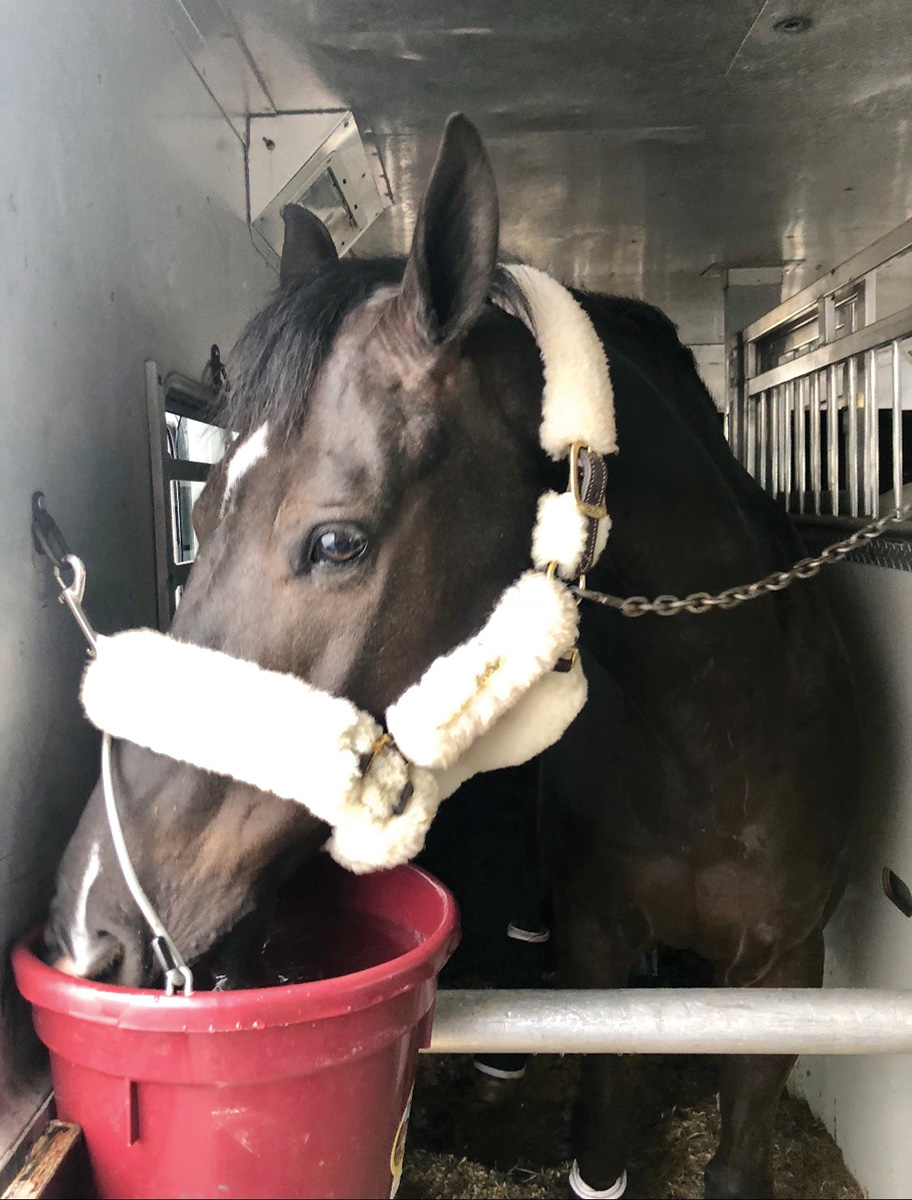
Unless you’ve stopped at a stabling area to stay overnight or for several hours, it’s safer for horses to remain in the trailer during breaks. With water breaks and hay provided, most horses will be fine in the trailer for 10 to 12 hours.
“You can’t just pull over at any rest stop to take your horse out and walk him around,” says Friend. “If you’re going on a long trip, you need to preplan stops and layovers.”
On trips of 24 hours or more, plan for a layover of about 12 hours so your horse can relax in a stall or pen where he can eat and drink normally. It’s not uncommon for horses to drink less than usual while in transit, so layovers help them stay hydrated.
Preparing for Long-Distance Horse Hauling
When hauling your own horse, ensure your trailer and tow vehicle are prepared for a long trip. This includes checking:
◆ Fluid levels
◆ Brakes
◆ Lights
◆ Tire condition and recommended inflation PSI, including spare tires (for tow vehicle and trailer)
◆ Necessary equipment to change tires
◆ Trailer wheel bearings (should be re-packed regularly)
◆ Trailer vents/windows/doors
◆ Full fuel tank
Use absorbent bedding so horses feel more comfortable urinating in the trailer. Large-flake shavings absorb moisture well and aren’t as dusty as small flakes. Avoid sawdust, which contributes dust and particulates to the air your horse is breathing.
If you have questions or concerns prior to making a long-distance trip, talk with your veterinarian.
Layovers SimplifiedLong-distance horse hauling is easier when you plan for overnight stabling and rest stops. Multiple websites provide access to listings of equine “motels” across the country so you can schedule safe stops along your route. Most layover facilities provide a bedded stall, water and hay. Expect to show negative Coggins test and health papers for each horse. Make reservations at least a couple days in advance. If your itinerary changes, give your hosts the courtesy of cancelling. The following websites offer equine layover booking: |
Shipping Boots: Yes or No?Protecting a horse’s legs with shipping boots for travel is fine—but only if your horse is accustomed to them. Shipping is stressful enough on its own, so don’t add unfamiliar equipment at the last minute. This can lead to pawing and kicking if the horse isn’t used to them. Skip the leg wraps, as these tend to loosen and slip down over time, becoming an aggravation and safety issue. |
This article about long-distance horse hauling appeared in the June 2023 issue of Horse Illustrated magazine. Click here to subscribe!





